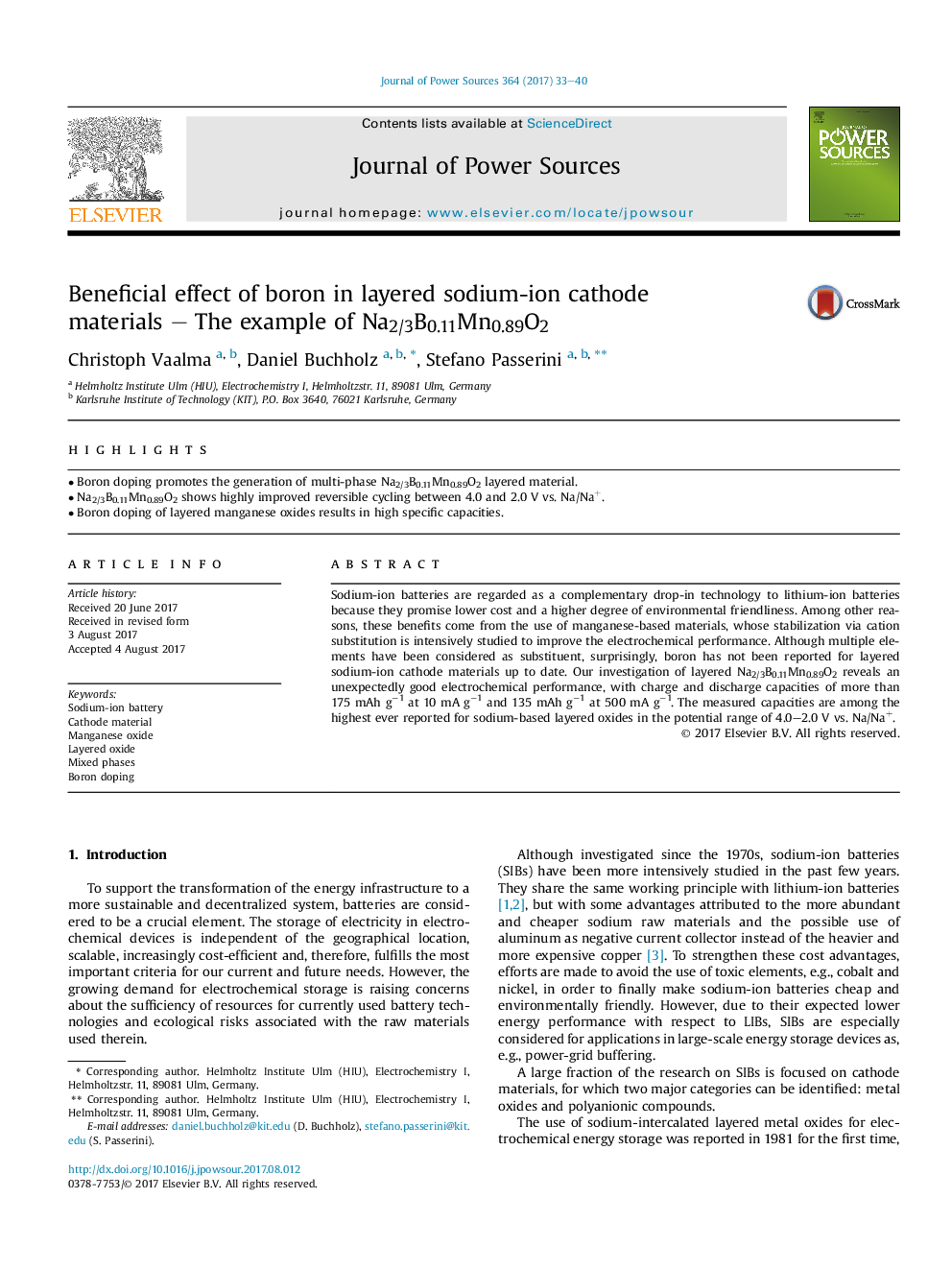| Article ID | Journal | Published Year | Pages | File Type |
|---|---|---|---|---|
| 5148689 | Journal of Power Sources | 2017 | 8 Pages |
Abstract
Sodium-ion batteries are regarded as a complementary drop-in technology to lithium-ion batteries because they promise lower cost and a higher degree of environmental friendliness. Among other reasons, these benefits come from the use of manganese-based materials, whose stabilization via cation substitution is intensively studied to improve the electrochemical performance. Although multiple elements have been considered as substituent, surprisingly, boron has not been reported for layered sodium-ion cathode materials up to date. Our investigation of layered Na2/3B0.11Mn0.89O2 reveals an unexpectedly good electrochemical performance, with charge and discharge capacities of more than 175Â mAh gâ1 at 10Â mAÂ gâ1 and 135Â mAh gâ1 at 500Â mAÂ gâ1. The measured capacities are among the highest ever reported for sodium-based layered oxides in the potential range of 4.0-2.0Â V vs. Na/Na+.
Related Topics
Physical Sciences and Engineering
Chemistry
Electrochemistry
Authors
Christoph Vaalma, Daniel Buchholz, Stefano Passerini,
